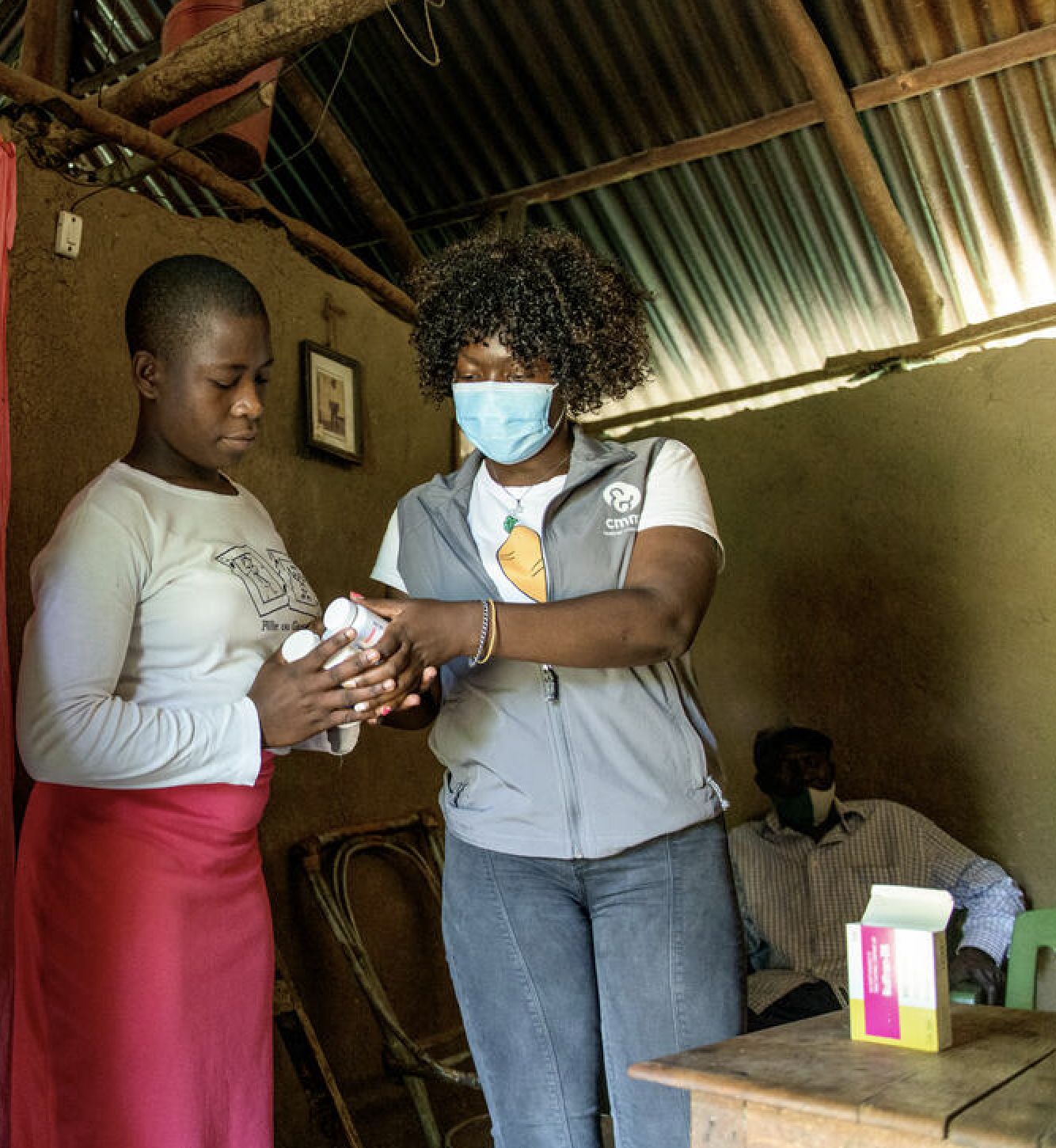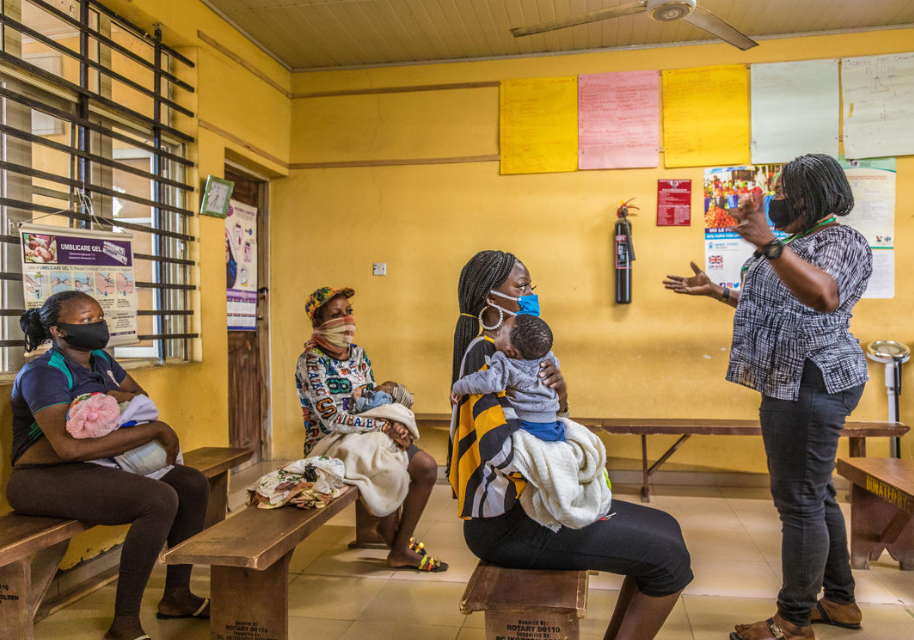A pillar of the Global HIV/AIDS Strategy 2021–2026, the fight against all forms of HIV-related stigma and discrimination is essential to ending the HIV epidemic by 2030—one of the United Nations’ Sustainable Development Goals. Since February 2024, L’Initiative and UNAIDS have been bound by a strategic partnership. Through this collaboration, L’Initiative is contributing to efforts to address inequalities in the response to the epidemic in six countries in West and Central Africa. Fatou Mbacké Sy, the coordinator of the partnership, reflects on its challenges and objectives.

Fatou Mbacké Sy
Project Coordinator, Equality and Rights for All Department, UNAIDS Regional Office, Dakar
What are the goals of the partnership between L’Initiative and UNAIDS?
Fatou Mbacké Sy: With L’Initiative, we are laying the foundation for a partnership that we want to be sustainable and committed. The fight against HIV-related stigma and discrimination is a long-term battle that needs to be fought in this region, which is particularly affected. Over the past two years, we have built and consolidated the foundations of this partnership, which was officially signed in February 2024. For the first time, L’Initiative is financially supporting a UN agency: this is an innovative funding model! This project will strengthen UNAIDS’ response in six countries in West and Central Africa to accelerate the reduction of HIV-related stigma and discrimination in the region.
We hope for legal advances: more protective laws so that affected individuals can fully exercise their rights, particularly those related to health, and that their access to healthcare services is guaranteed. Thanks to the synergies created with the support of our civil society and community partners, we hope to change social norms and perceptions to effectively address the pandemic.
More broadly, this project aims to contribute to the 10-10-10 goals of the 2021–2026 Global AIDS Strategy. By 2025, the goal is for less than 10% of people living with HIV and key populations to experience stigma and discrimination, less than 10% of women and girls, people living with HIV, and key populations to experience gender-based inequalities and violence, and less than 10% of countries to apply punitive laws or policies that create barriers to justice. The project also aligns with the UNAIDS 95-95-95 targets: at least 95% of people living with HIV know their HIV status, at least 95% of people who know their HIV status are on antiretroviral treatment, and at least 95% of people on treatment have suppressed viral load by 2025.
The 10-10-10 and 95-95-95 goals are inextricably linked. A restrictive legal environment, discriminatory practices, and stigma often make key populations, as well as young women and girls, hesitant to get tested or access treatment services. These barriers further expose them to delays in diagnosis and care.
How is this partnership implemented?
The partnership will last for three years. This year, we are focusing on the involvement of our three civil society partners in the region: Coalition Plus, Enda Santé, which leads the Civil Society Institute for Health in West and Central Africa, and Alliance Côte d’Ivoire, along with their local partners. Communities, as key actors in the HIV response, have a deep understanding of local realities and specific needs. Together, we are developing the project, clarifying the roles of each stakeholder, and defining the areas of intervention, with the goal of placing the affected communities at the heart of the actions taken.
We are also working to ensure that the authorities in the six concerned countries get involved to ensure the relevance, coherence, and sustainability of our initiatives. To this end, our colleagues from UNAIDS’ regional offices are working closely with the national AIDS program leaders and health actors, such as Ministries of Health and Women’s Affairs in some countries, as well as parliamentarians. These interactions allow us to align our efforts with the priorities of national responses while ensuring their complementarity with other ongoing initiatives, including those of the Global Fund under the GC7 funding cycle. This project aims to create synergies to address HIV-related stigma in a systemic way.
Why were these six countries in West and Central Africa chosen?
Fatou Mbacké Sy: The project is being implemented in Benin, Cameroon, Côte d’Ivoire, the Central African Republic (CAR), Senegal, and Togo. In these countries, there are discriminatory and punitive laws or policies that hinder access to services and care. HIV-related stigma and discrimination pose a significant barrier to ending AIDS as a public health threat by 2030—UNAIDS’ goal—and to human rights. Key populations (sex workers, men who have sex with men, people who inject drugs) are particularly burdened by stigma, which harms prevention, treatment, and care for HIV. In 2021, 74% of new HIV infections in West and Central Africa involved key populations and their partners. Adolescent girls and women aged 15 to 49, who accounted for 43% of new infections in the region in 2022, face significant legal and societal barriers.
How do you support these countries in the fight against HIV-related stigma?
Fatou Mbacké Sy: We support them in the legal and legislative reforms they undertake to ensure the development of more protective and inclusive laws and policies for the general population, key populations, as well as young women and adolescent girls. We have supported legal reforms in countries such as Benin, Cameroon, and the CAR, by assisting parliamentarians and opinion leaders to better address the needs of these groups in the analysis and transformation of the legal framework. We also support initiatives such as the development of regulatory texts in the CAR and the engagement of parliamentarians in Benin to revise the HIV law in order to remove structural barriers to access to services.
We are also mobilizing to strengthen community monitoring. Mechanisms already exist, and in some countries, they also address issues related to stigma and discrimination. Our ambition in this project is to reinforce these mechanisms by working together to define indicators and develop tools that will allow them to systematically collect and analyze data related to these issues. This monitoring is essential and helps analyze the actions taken, especially as this data can be used for advocacy purposes.
What actions are being taken for vulnerable populations?
Fatou Mbacké Sy: We aim to improve and strengthen the legal access for key populations, young women, and adolescent girls in cases of stigma or rights violations. We conduct legal support actions for victims of gender-based violence (GBV) and train peer educators from key populations to strengthen access to justice and empower the affected communities. We have even set up legal clinics to enhance capacity building and empowerment.
At the same time, we are evaluating existing mechanisms and frameworks that key populations, young women, and adolescent girls can use in cases of rights violations, stigma, and GBV in healthcare settings. This assessment and baseline data will guide the next phase of the project for a more effective and targeted response. To contribute to the reduction of stigma, discrimination, and GBV in healthcare settings, we also train staff at public and community health centers to adopt less stigmatizing and discriminatory attitudes, and to identify and address victims of GBV. By raising awareness among healthcare professionals and local authorities, we work to ensure that affected populations are cared for in an environment that respects their rights.
We also use innovative tools like LILO Connect—Looking In, Looking Out—a series of methods and programs designed to support individuals from vulnerable groups to reduce stigma. In Côte d’Ivoire, the adaptation of the YIMBA platform—aimed at improving the collection, analysis, and use of social media information regarding key populations—will enable real-time analysis of discriminatory and hateful speech on social media and facilitate targeted and swift interventions to counter these narratives and protect the rights of marginalized populations. This has been particularly crucial this year in response to the “anti-woubi” (“anti-gay”) phenomenon, which has intensified stigmatizing discourse against key populations.











